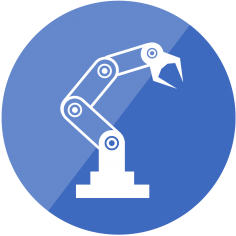
Robotics and Clever Control Systems
Are robots smarter than humans? Will automated control systems eventually become clever enough to control us? In this course, students embark on a journey into the world of technology, engineering, algorithmic thinking and programming. They learn how to design, build, and program their own robots and clever control systems using LEGO EV3 Mindstorms and Arduino UNO.
In the course’s robotics segment, students delve into the capabilities of LEGO EV3 Mindstorms, a versatile robotics kit renowned for its ease of use. Through engaging activities and challenges, students learn to assemble robots, utilize sensors, and program behaviors using a Scratch 3-based programming environment tailored for EV3. They discover how to navigate obstacles, follow lines, and complete tasks, all while honing their problem-solving and critical-thinking skills.
In the course’s automation segment, students explore the world of electronics and clever control systems using Arduino UNO, a popular microcontroller platform. With Arduino, students learn to interface sensors, motors, and other peripherals, enabling them to automate processes and create clever control systems like an automated plant watering system or a home security system. Using a Scratch 3-based programming environment adapted for Arduino, students write code to control inputs and outputs, create responsive behaviors, and bring their projects to life.
By the end of the course, students emerge with a deeper understanding of robotics, automation, and programming, equipped with the skills and knowledge to tackle real-world challenges in the ever-evolving field of technology.
Learning Objectives
Develop construction skills for building robots using LEGO technic pieces, including structural stability, gear mechanisms and attachment methods, and assimilate the basic features of the Arduino UNO board including digital and analog input/output pins, power supply options, and communication interfaces.
Understand the use and different types of sensors (e.g. touch, color, ultrasonic, and gyro sensors) to gather and use sensor data to create responsive behaviors in robots, such as obstacle avoidance, line following, and object detection.
Learn basic principles of electronics, including voltage, current, resistance, circuits, and components such as resistors, LEDs, and how to connect and use various sensors with Arduino boards, including temperature, light, motion sensors and ultrasonic sensors.
Develop problem-solving skills to diagnose issues, troubleshoot hardware or software problems, and debug Arduino or robot projects effectively, utilizing the basic safety practices when working with electronics.
